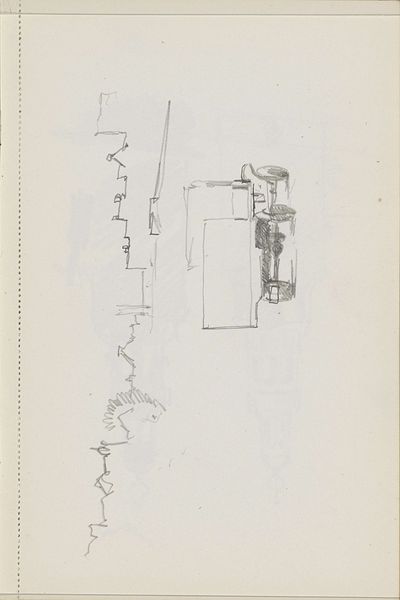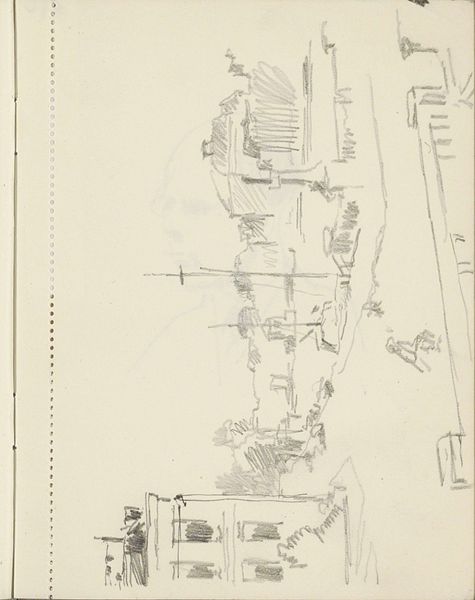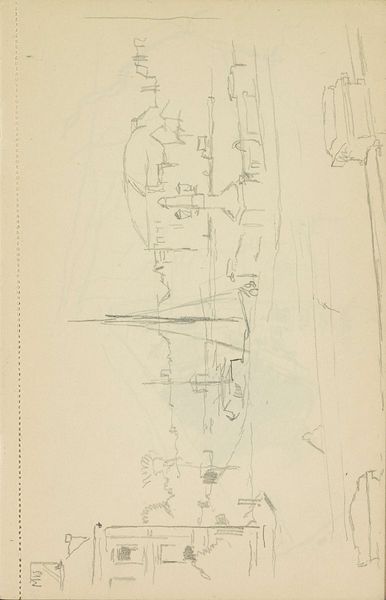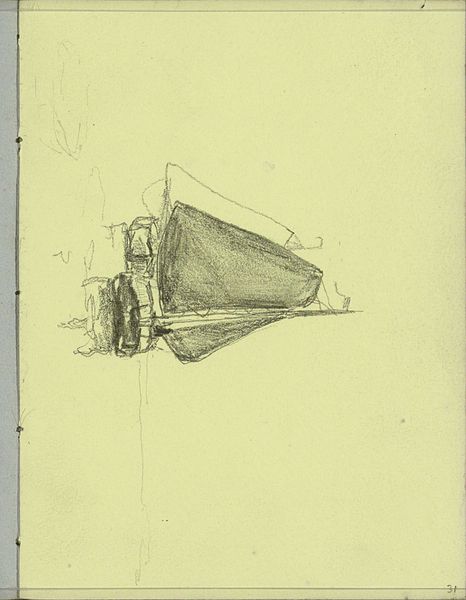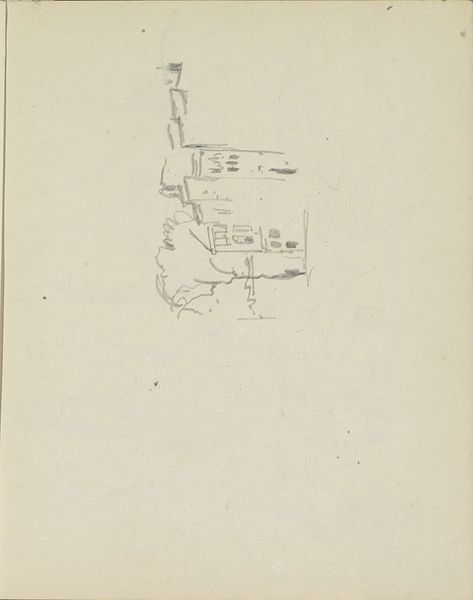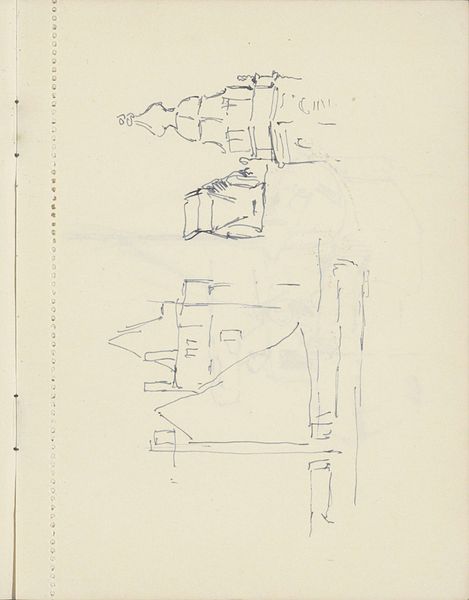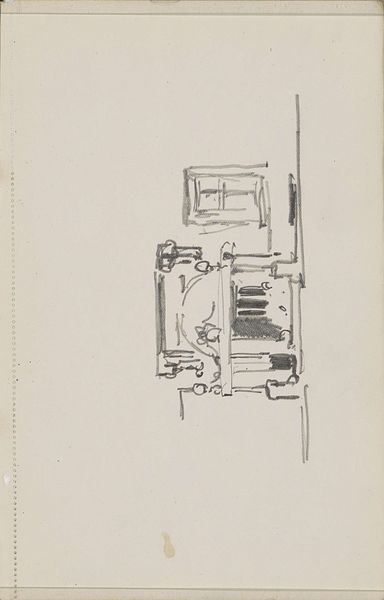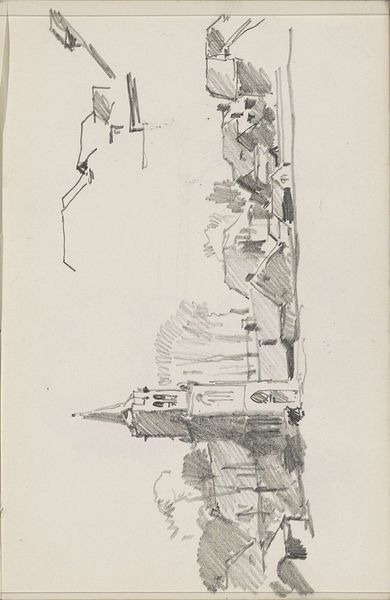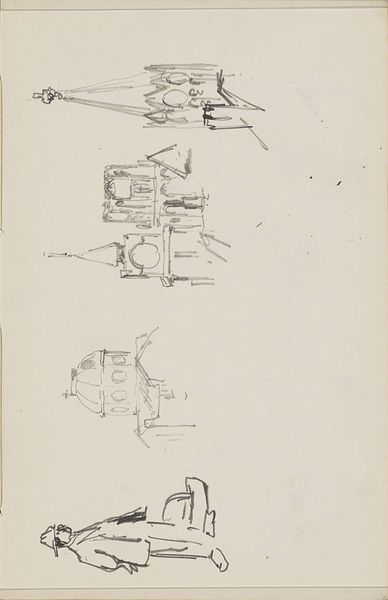
drawing, pencil, graphite
#
drawing
#
pencil sketch
#
etching
#
pencil
#
graphite
#
cityscape
#
realism
#
building
Copyright: Rijks Museum: Open Domain
Editor: Here we have "Building with Towers on a Street" by Cornelis Vreedenburgh, created sometime between 1890 and 1946 using pencil and graphite. It's a very light, almost ephemeral sketch; the artist focused on outlining architectural forms. What do you see in this piece, looking beyond just the buildings? Curator: Primarily, I observe the structural interplay of lines. Note the contrast between the solidity implied by the dense hatching and the actual fragility of the medium. How do you interpret the extensive empty space surrounding the drawn structure? Editor: It gives me a sense of isolation, almost as if this imposing structure is detached from its environment, existing only in the artist's mind. Is that a function of the composition, with so much negative space? Curator: Precisely. The artist uses this void as a compositional element, effectively framing and isolating the architectural form. The deliberate choice to leave areas incomplete directs our focus. It highlights the rudimentary framework supporting the illusion of three-dimensionality. Vreedenburgh is laying bare the bones of representation. Editor: So, even in a simple sketch like this, the choices regarding composition and technique become the focus, overshadowing the subject matter itself? Curator: Absolutely. By attending to the relationship of line, tone, and void, we come to understand that the subject – the buildings – is but a vehicle for exploring artistic concerns around representation and form. Editor: This has really shifted how I see the sketch; I was focused on the buildings themselves, but now I appreciate the artist's mark-making and composition. Curator: Indeed, the power of art lies not merely in what it depicts, but how it depicts it.
Comments
No comments
Be the first to comment and join the conversation on the ultimate creative platform.
